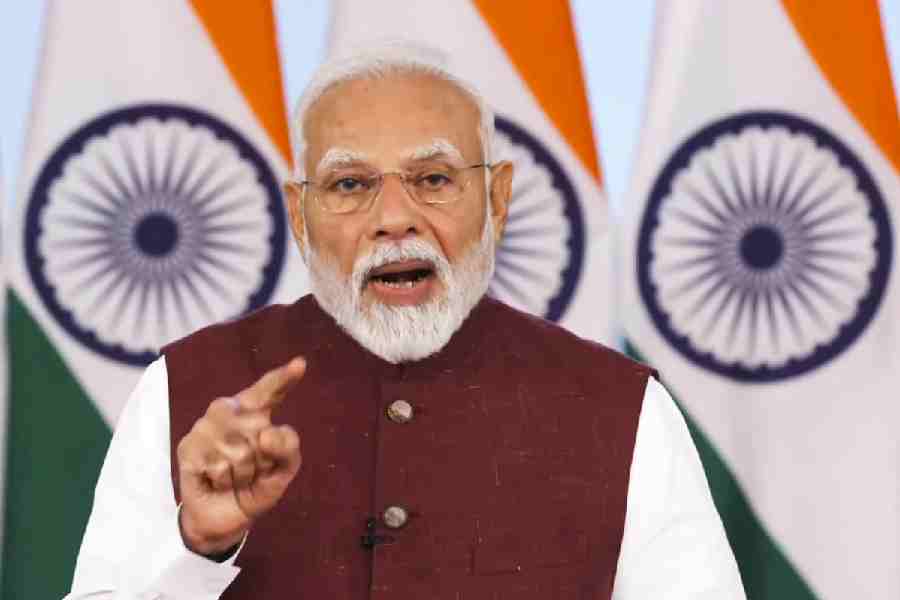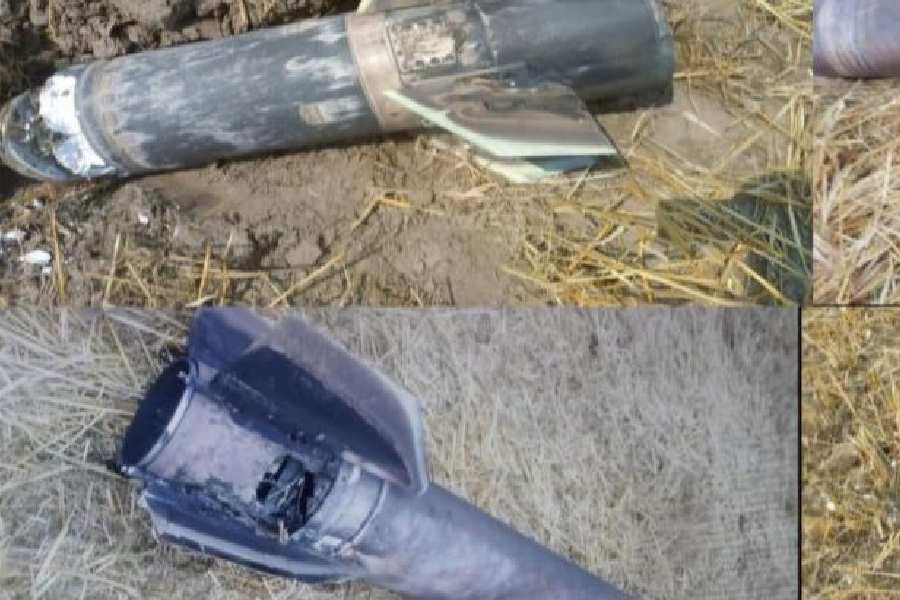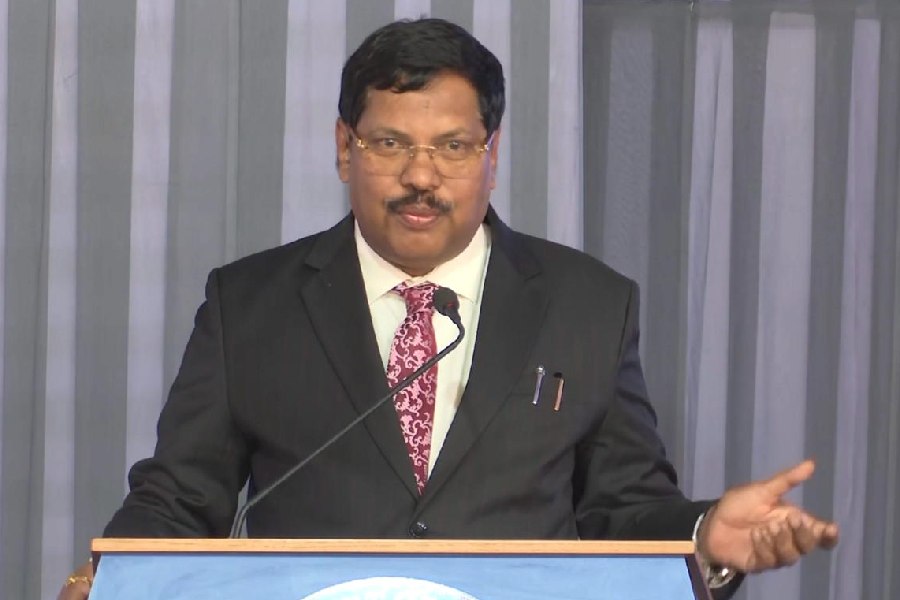Calcutta, March 11: Mamata Banerjee today released Trinamul's manifesto for the Assembly elections with the promise of continuing with her development agenda, five summers after cradling a charter that raised expectations of a new deal.
In terms of look and feel, this year's 142-page glitzy document was an improved version of the 55-page manifesto of 2011, bearing imprints of professionalism and the might of the ruling party.
There were similarities between the two manifestos in terms of the use of green and a heavy dose of data and bar diagrams. A closer look, however, pointed to several changes.
The most noticeable difference was the absence of management jargon, such as "bottom of the pyramid" and "hub-and-spoke model", in the 2016 document. Trinamul sources attributed the change to the omission of finance and industries minister Amit Mitra, a former Ficci secretary-general, from the exercise.
"Amitda had played a key role in the preparation of the 2011 manifesto. But this year's manifesto has been prepared by professionals under the direct supervision of Didi. No one had any idea about even the manifesto's cover," a Trinamul leader said.
Unlike the 2011 manifesto, which had outlined the "problems" Bengal was facing and offered detailed time-bound solutions, the 2016 charter deals more with the "achievements" of the Trinamul government.
Although the government's plans are included in each of the 16 chapters, dealing with industry, health, education, tourism and minority development, no timeline has been set. In the 2011 manifesto, the deliverables had been divided into two categories - the first 200 days and the next 1,000 days.
Although there has been no independent assessment of the achievements of the government vis-à-vis the promises till now, Mamata today said she had done 1,000 times more than what she had said before the 2011 elections. Sources, however, said time-bound targets increased the credibility of a manifesto.
"After claiming that almost everything has been done in the past five years, it is difficult to promise sweeping changes. Besides, setting targets is easy when someone is in the Opposition. Doing the same is difficult when in power," a senior government official said.
Since coming to power, the Trinamul government has brought out at least five publications on its achievements - after the completion of three months, one year, one-and-a-half years, three years and four years.
The highpoints of the 2016 manifesto are the government's resolve to double the income of farmers and plan to "edit the 1955 West Bengal Land Reforms Act, Section 14" to help investors, industrial units and industrial parks get land.
An official said the promise on land would keep alive the hope of the abolition of the land ceiling. The ceiling prohibits possession of land in excess of 24.2 acres.
The manifesto is silent on the urban ceiling, which prohibits the holding of land in excess of 500sqmt in Calcutta and 2,000sqmt in Asansol and Durgapur, and the government's stand on land acquisition and SEZ. The ceiling and the government's opposition to any role in land acquisition and granting of SEZ status are regarded as hurdles to industry in Bengal.
"Everyone knows Trinamul's stand on these issues. But the fact that it has not been repeated in the manifesto at least leaves open the possibility for policy tweaks," said an official of a leading Calcutta-based chamber of commerce.
The other notable deviation from the last manifesto is the omission of comparisons with other states, such as Gujarat, Tamil Nadu and Andhra Pradesh. The 2011 document relied heavily on state-wise comparisons to drive home the point that Bengal was lagging behind because of the 34 years of Left rule. The example of Gujarat, which was then helmed by Narendra Modi, had been used liberally in the 2011 manifesto.
This year's manifesto cites all-India figures and tries to show how Bengal has fared better than the national average under Mamata's watch.
"A manifesto is a political document, not a status report. A political party will use numbers that suits its purpose," a Bengal minister said.
Mamata today said she believed in "talking less and working more" and added that she didn't bring in "any politics" in the manifesto.
However, at the beginning of the news conference where the manifesto was released, the chief minister stressed that the document would be available in five languages - Bengali, English, Hindi, Urdu and Ol Chiki - which sources said was a political move to reach out to various sections of the society.
The fact that politics was playing on her mind was clear as she spoke more about the Congress-Left understanding than her plans for the state.
"The focus of the campaign will be development. But why shouldn't I talk about the unethical ganging up of the Congress and the CPM? I will talk about it from morning till night," Mamata said, asked why she was devoting so much time to the Opposition axis.
Mamata also referred to Singur and Nandigram while releasing the manifesto, underscoring the importance of the anti-land acquisition politics that catapulted her to power five years ago. Not only did she announce plans to join a rally on March 14 in memory of those killed in the police firing in Nandigram in 2007, she iterated that she had made all efforts to return land to Singur farmers.
"We had brought a bill to return land to farmers immediately after coming to power. It is stuck because of legal processes," she said.










